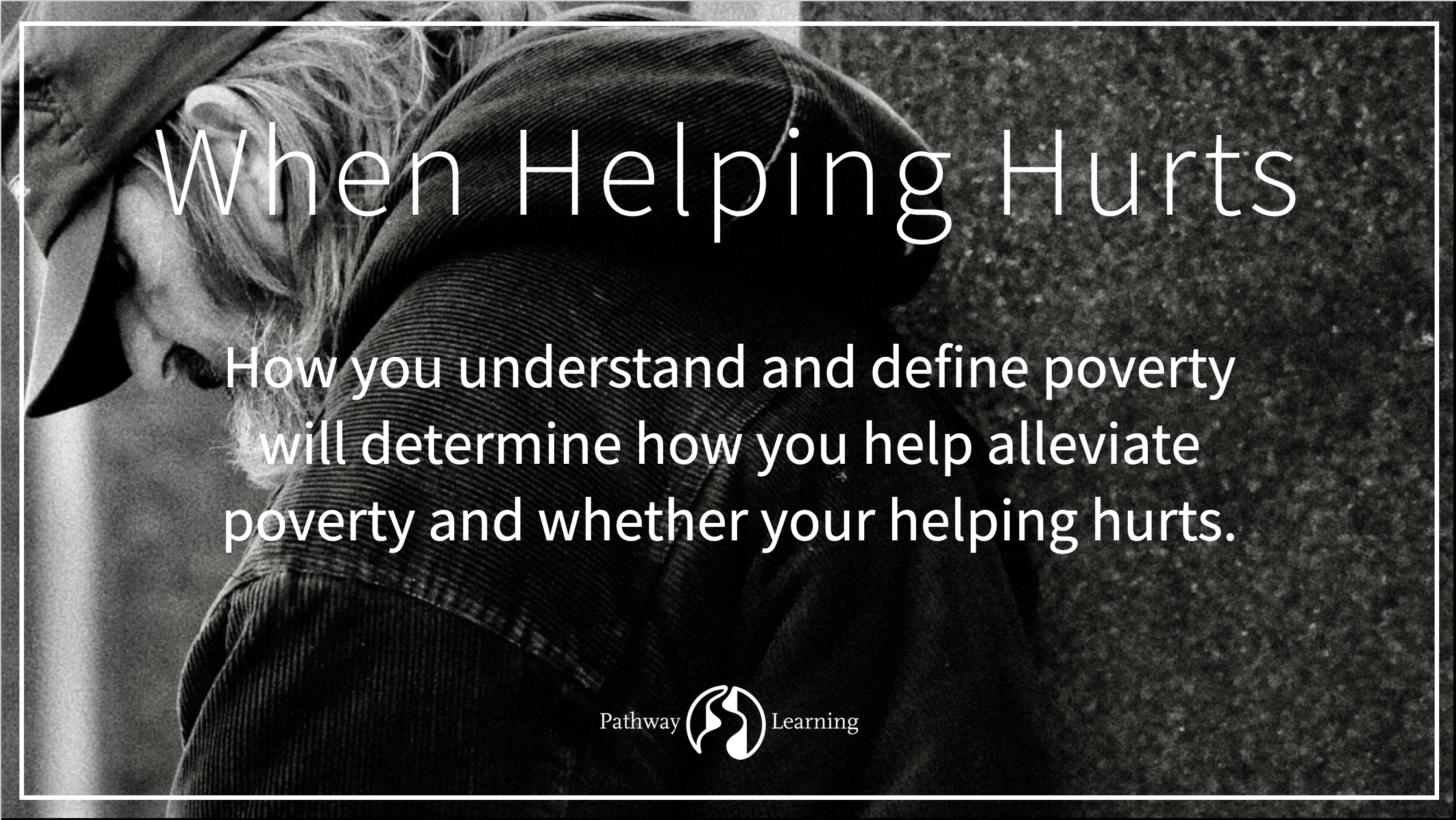The Practice of Mercy: Mercy Part 6
Series: Mercy, Part 6
Author: Steven L. Childers
Title: The Practice of Mercy
How we understand and define poverty will determine the practical methods we use to help alleviate poverty. For example, if we think the root cause of poverty is a lack of material things, then our solution will focus mostly on giving material things to the poor. If we think the root cause of poverty is oppression from unjust governments, our solution will focus on working for social justice.
If we think the source of poverty is mostly sickness, our focus will be on providing health care to the poor. And if we believe poverty’s root is a lack of knowledge, we’ll focus on helping bring education to the poor.
In this course, we’ve established from Scripture that the root cause of poverty is ultimately broken relationships with God, ourselves, others, and creation. This means we’re all poor, just in different ways, because each of us experiences some form of brokenness in all four foundational relationships.
Therefore, showing mercy to the poor is primarily a ministry of reconciliation, helping alleviate their suffering by strengthening their broken relationships with God, self, others, and creation.
To be effective in our ministry to the poor, we must realize that one approach or method will not work well in every situation. We must determine which of three general approaches will best serve the poor at a particular time and place. The failure to distinguish the appropriate approach can result in doing more harm than good.
The first approach is called “Relief.” Relief is appropriate when people are not capable of helping themselves. Brian Fikkert, co-author of the book When Helping Hurts, writes, “Relief can be defined as the urgent and temporary provision of emergency aid to reduce immediate suffering from a natural or man-made crisis.”
Jesus illustrates relief to the poor in his story of the Good Samaritan who stops everything in order to provide emergency care for the man who was beaten, robbed, and left by the side of the road. The Apostle Paul’s financial collections among all the churches is another example of providing relief to the hungry and poor at the Jerusalem church.
But we must always remember that some people are so critically ill and near death that they cannot help themselves. Effective mercy ministry to them is often just being with them and providing them comfort until they die.
The second approach is called “Rehabilitation.” This is appropriate when people can participate to some degree in their own recovery from a crisis. Fikkert writes: “Rehabilitation begins as soon as the bleeding stops; it seeks to restore people and their communities to the positive elements of their pre-crisis conditions.”
The third approach to showing mercy to the poor is called “Development.” This is appropriate when people are able to participate in improving their lives beyond their long-standing levels of poverty. Fikkert writes, “Development is not done to people or for people but with people.”
The development approach involves walking with the poor through a long-term, holistic reconciliation process that helps them alleviate their suffering and flourish by strengthening their relationships with God, self, others, and creation.
To be effective in showing mercy to the poor, we must determine which of these approaches is appropriate. One of the most common mistakes well-intentioned people make is using a relief approach with people who need rehabilitation or development. Giving temporary relief handouts of material assistance to people who need long-term rehabilitation and development is likely to do harm.
So what’s needed to help your church have an effective mercy ministry to the poor?
First, prepare your church for mercy ministry no matter how new or old your church. It’s not just the materially poor who struggle with addictions, mental illness, broken families, and unemployment, etc.
A mercy ministry is required in your church no matter what socio-economic group makes up your church or community. This involves preaching and teaching about the importance of ministries of mercy, as well as equipping and modeling mercy ministries to the poor both inside and outside the church.
On a practical level, this normally includes the church leaders establishing guidelines and policies for how the church will respond to the needs of the poor. These policies will differ between churches based on each church’s unique resources and communities. Randy Nabors created a series of questions to help churches establish their own policies, including:
Who has priority in receiving help?
What kind of help will you give?
What kind of help will you not give?
What is the limit of your help?
What structure will you use for members?
What structure will you use for strangers?
Who makes decisions on exceptions?
When do you call in the church leaders?
Regarding our priorities in assistance, since the Apostle Paul teaches in Galatians 6:10 that we should “do good to everyone, and especially to those who are of the household of faith,” we should give priority to caring for church members and their families. Some churches also give priority to people in their immediate community and to specialized mercy ministries.
Another way to help mobilize your church to have an effective mercy ministry is to diagnose the unique needs and brokenness in your church and community. This can be done by conducting informal and/or formal surveys inside and outside your church. A helpful question to consider answering is, “What are ways that sin has uniquely damaged our church and community?” This can help you determine the levels and forms of injustice, hunger, sickness, racism, prejudice, greed, materialism, etc.
But when diagnosing the needs of the poor inside and outside of the church, you must avoid having an inordinate focus on what is wrong with the poor that needs to be “fixed” by those outside of their community. The assumption that the solutions for poverty must come from people outside their community is often wrong, arrogant, and exacerbates their feelings of inferiority or the outsiders feelings of superiority.
Instead, effective mercy ministry starts by focusing on the gifts, abilities, and assets God has given to the poor, and it always includes the poor in the design, development, and implementation of mercy ministries.
Although every church should have its own mercy ministries under the oversight of church elders and deacons, it’s often wise and helpful to partner with other churches and organizations with a proven history of effectively serving the poor inside and outside the church.
Church historian, Richard Lovelace calls all who are in Christ to participate in his ongoing ministry to a broken and poor world as prophet, priest, and king.
We are priests as we pray for those near us and draw them into the sphere of God’s mercy and blessing. We are prophets as we hold a biblical straightedge against whatever is crooked around us. And we are kings as we use whatever powers we have to straighten what is crooked, reshaping whatever falls within the scope of our responsibility until it reflects the order of heaven.


